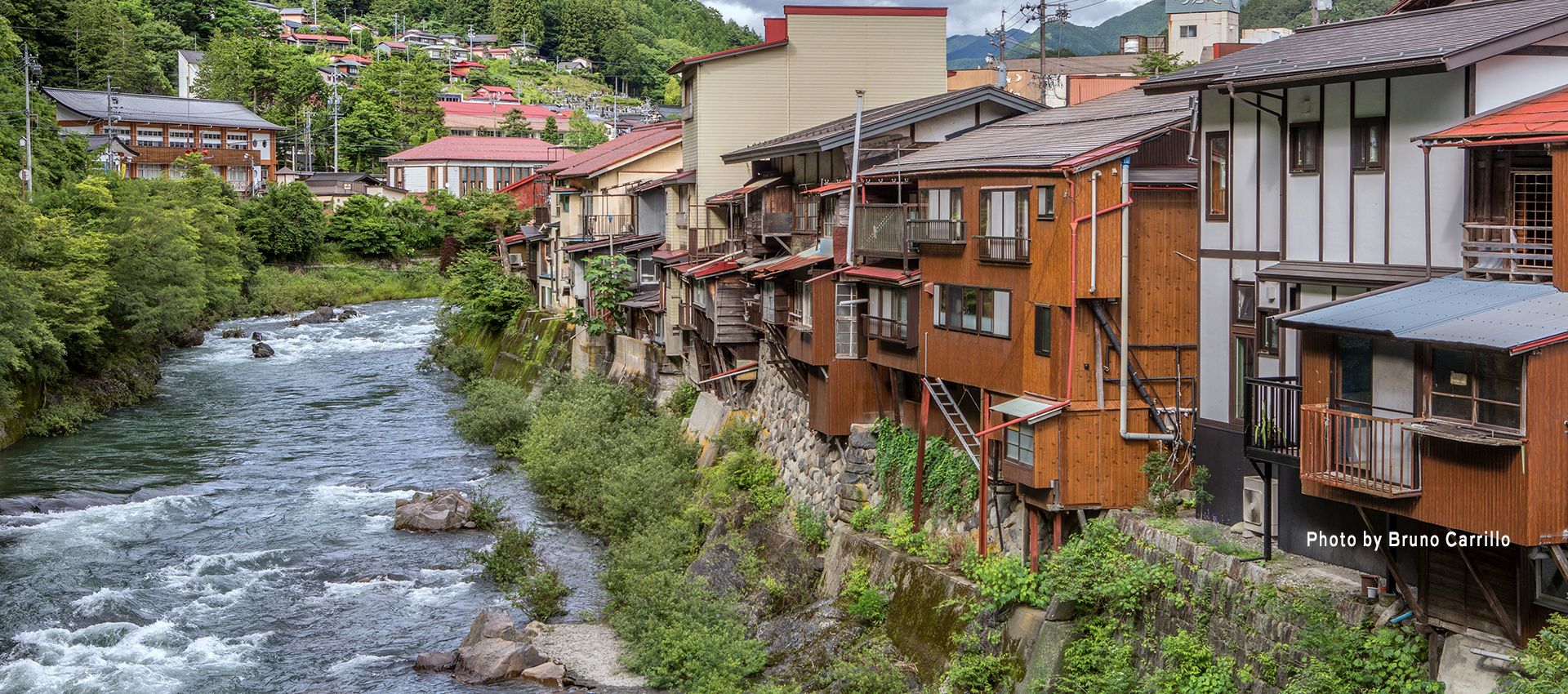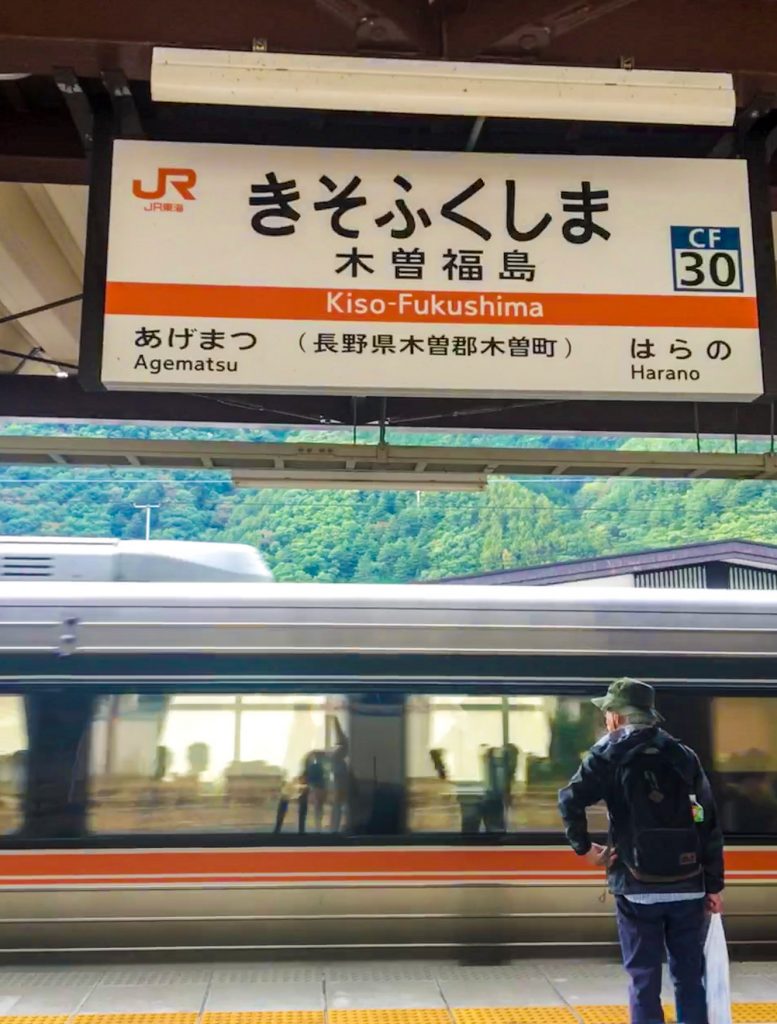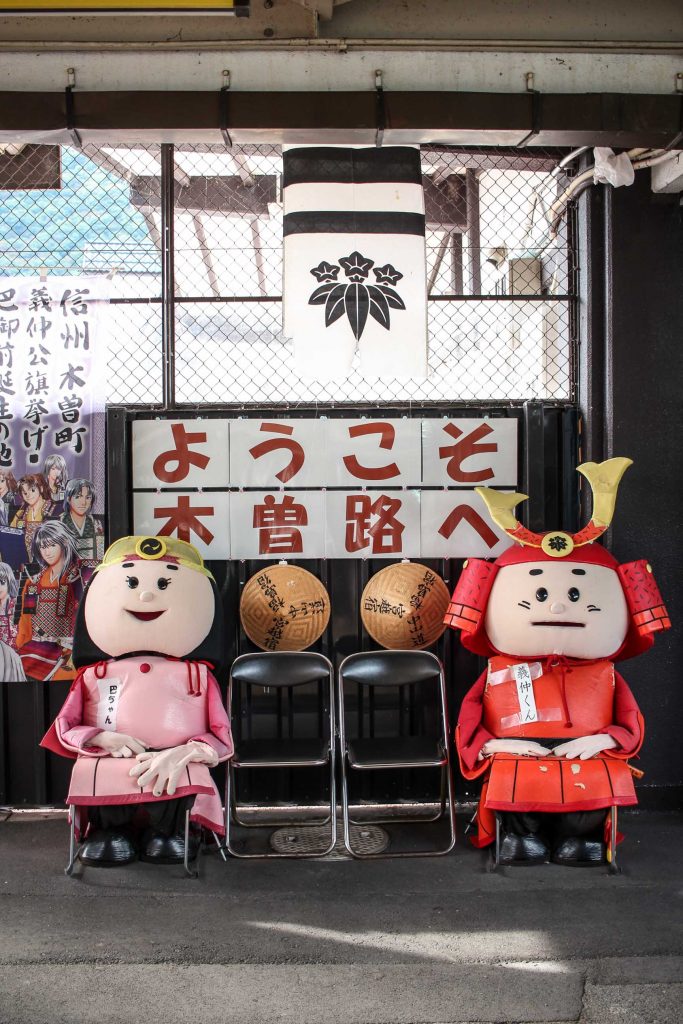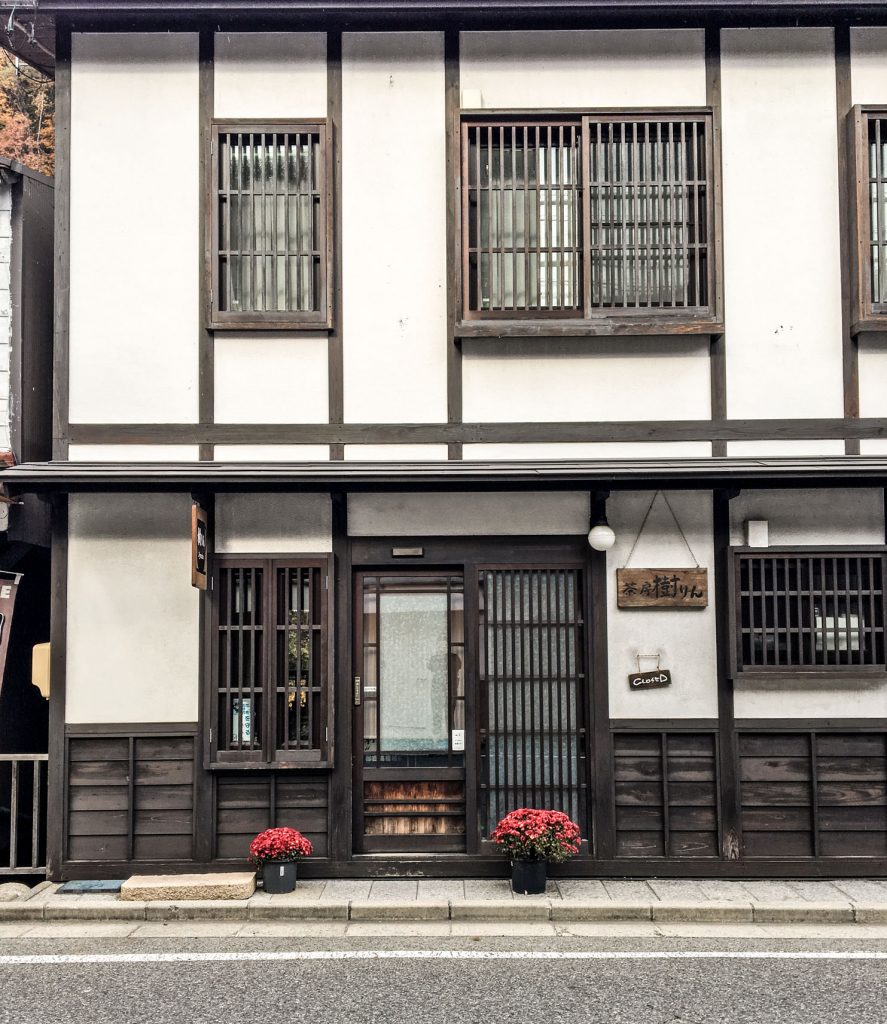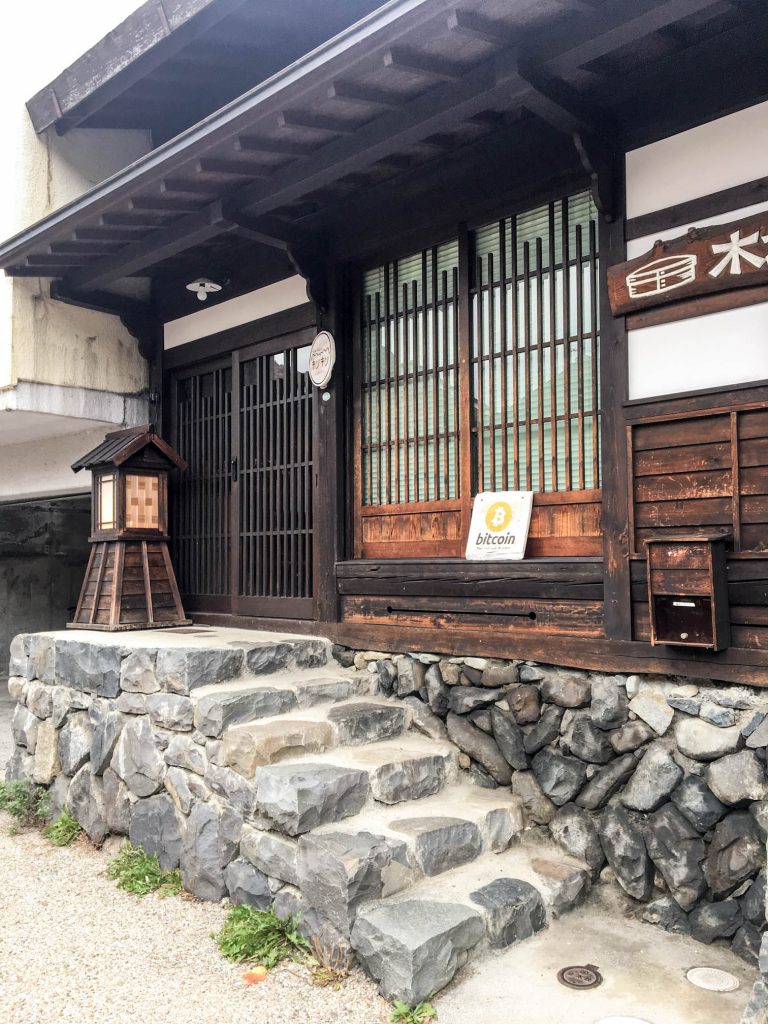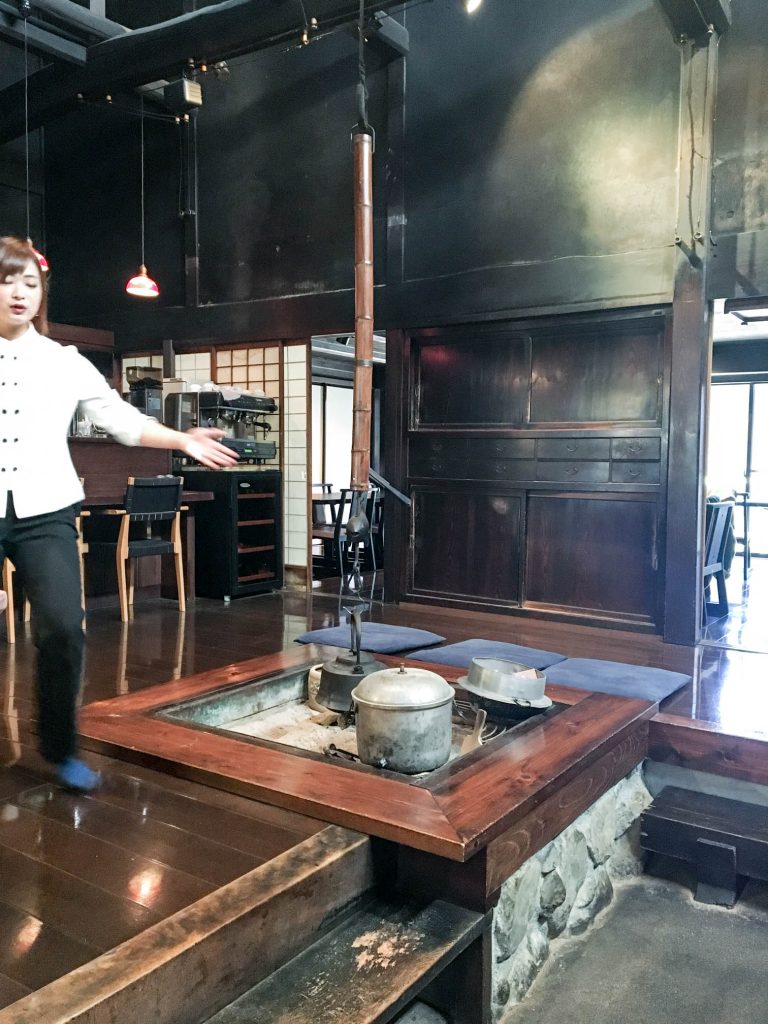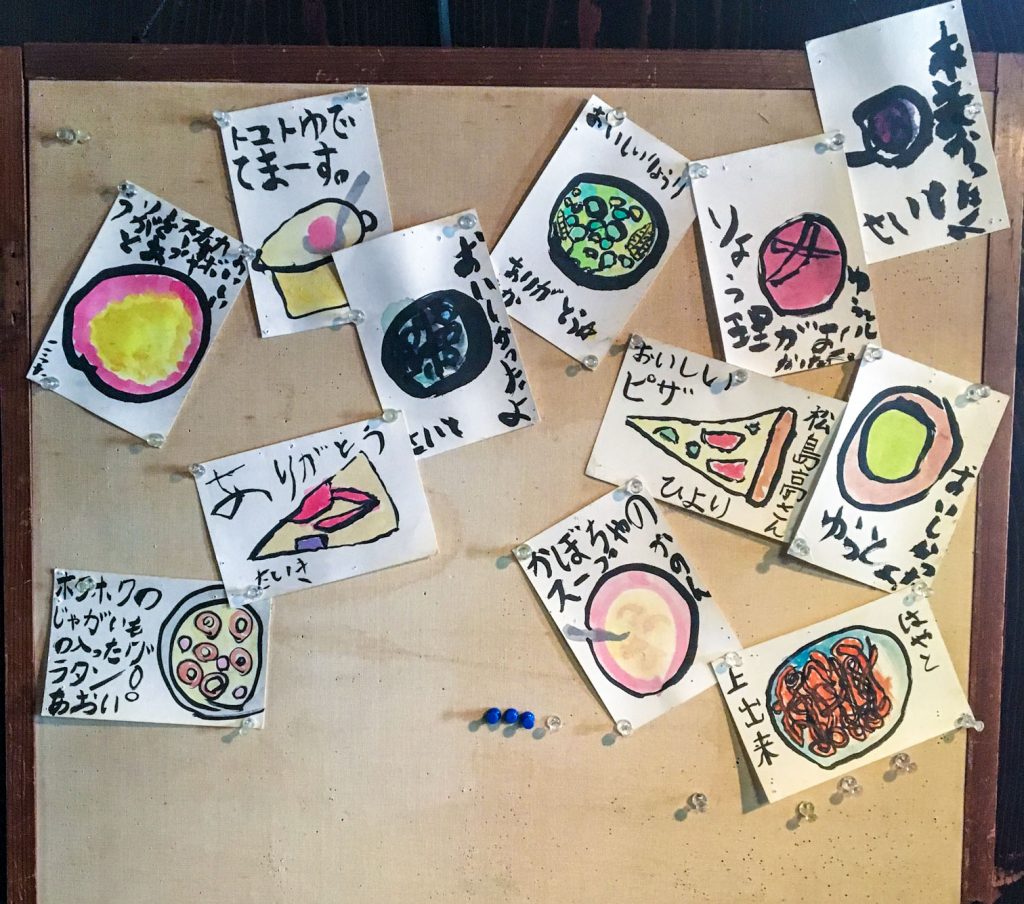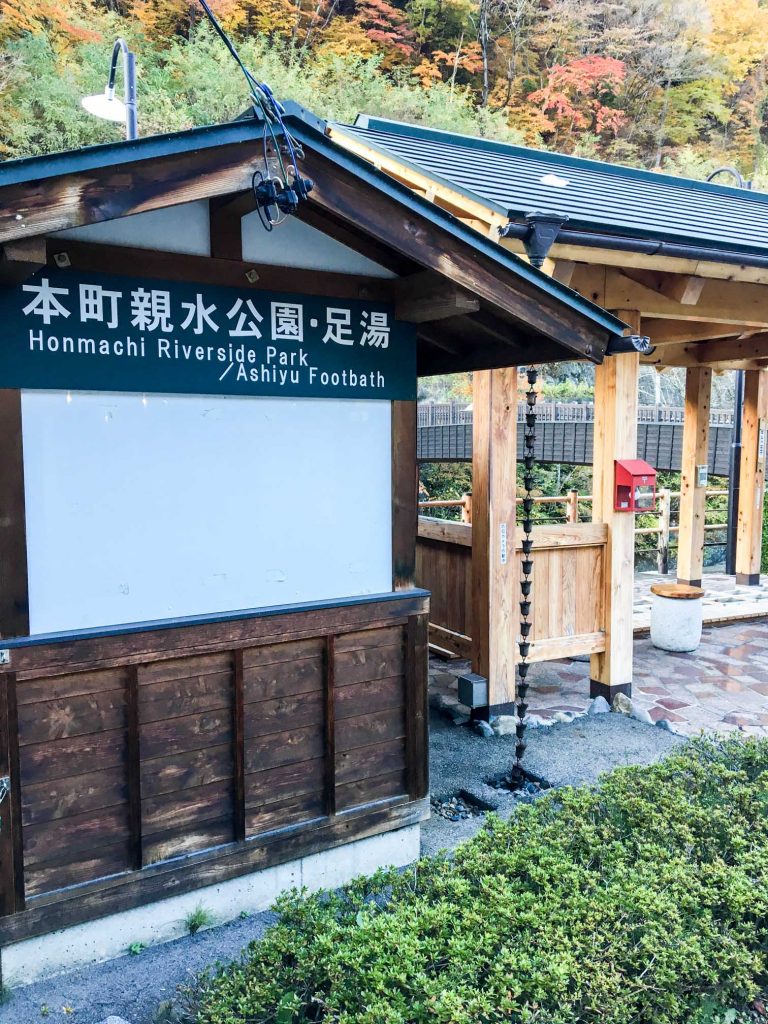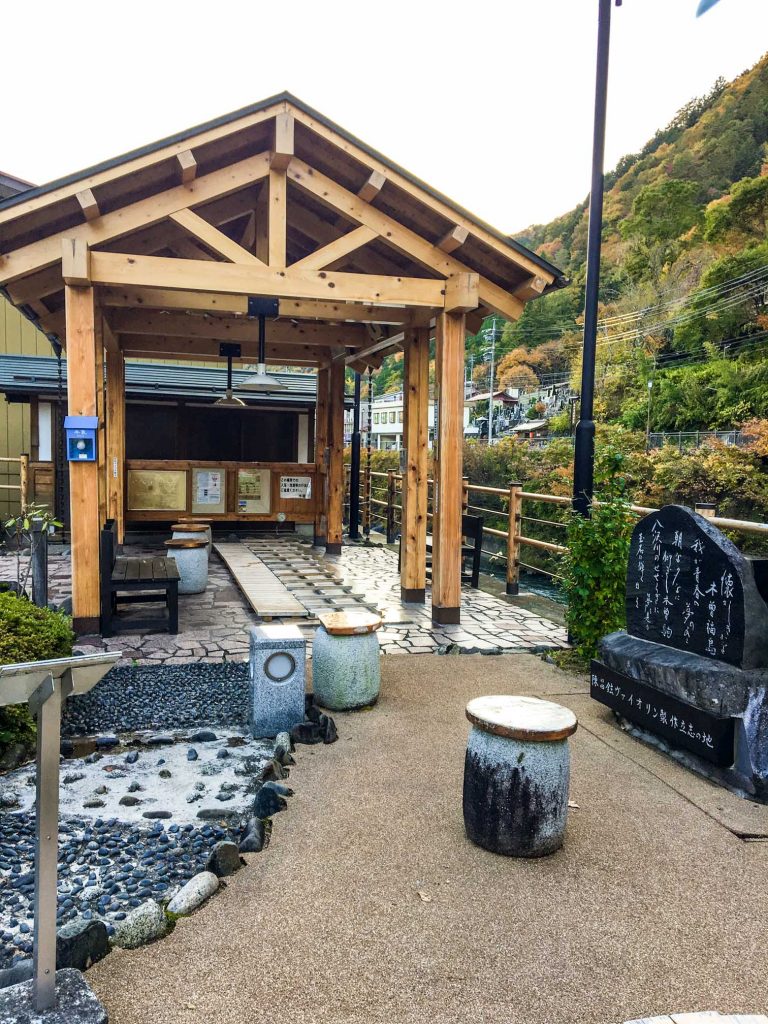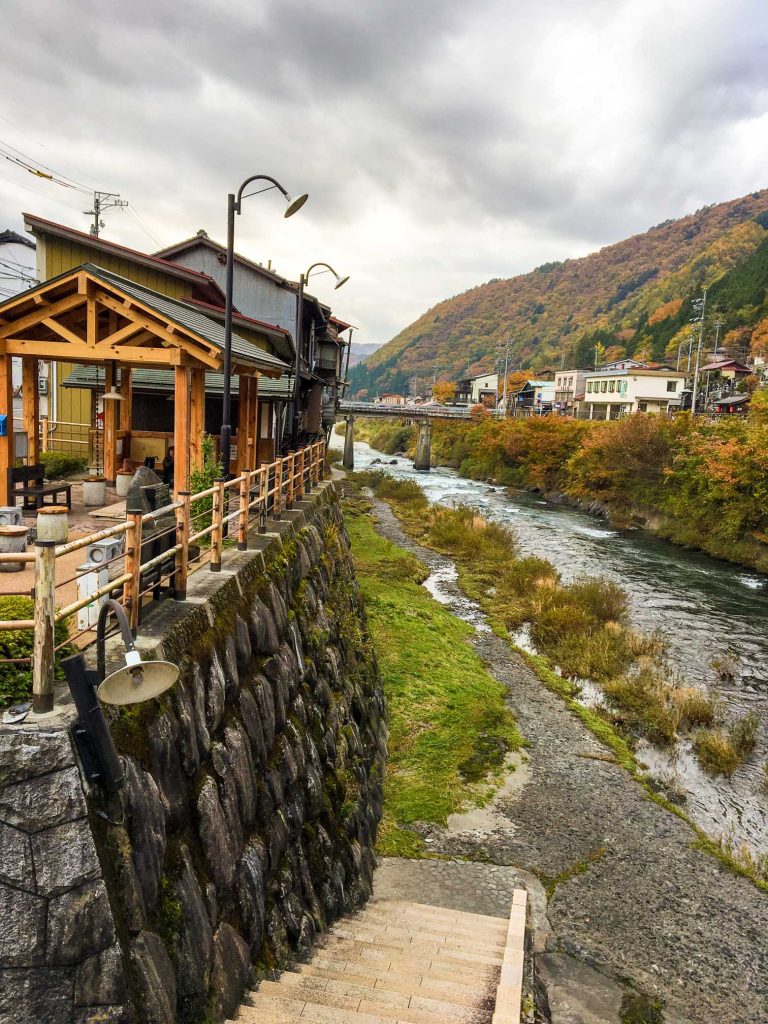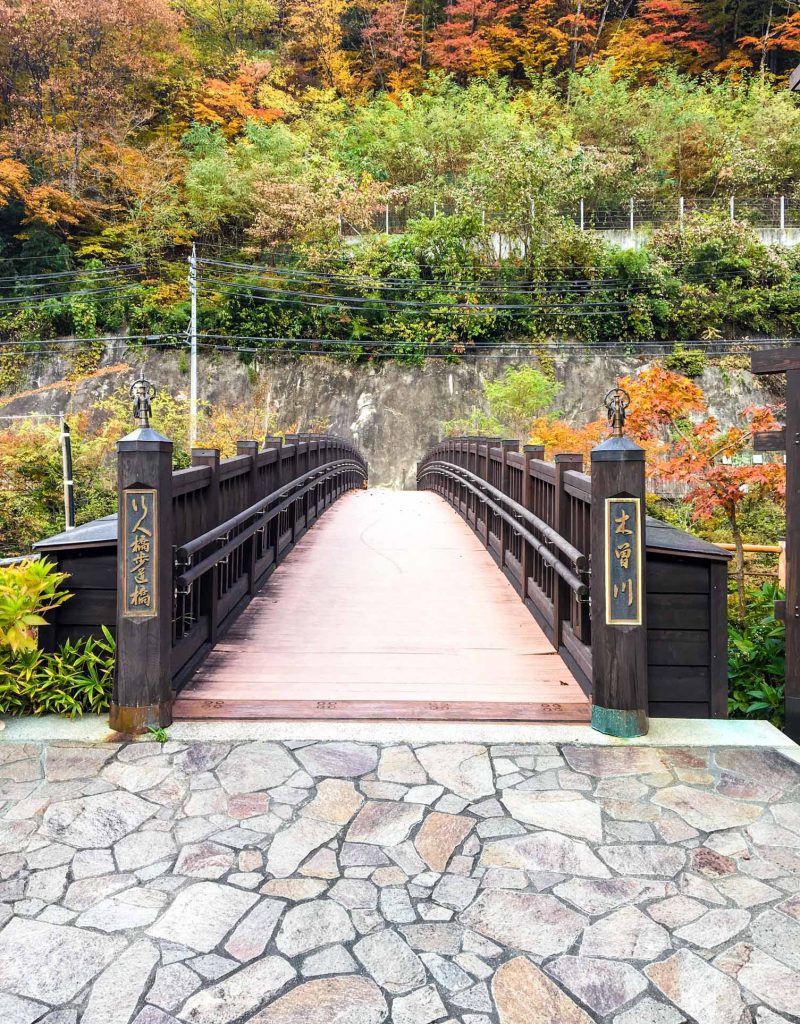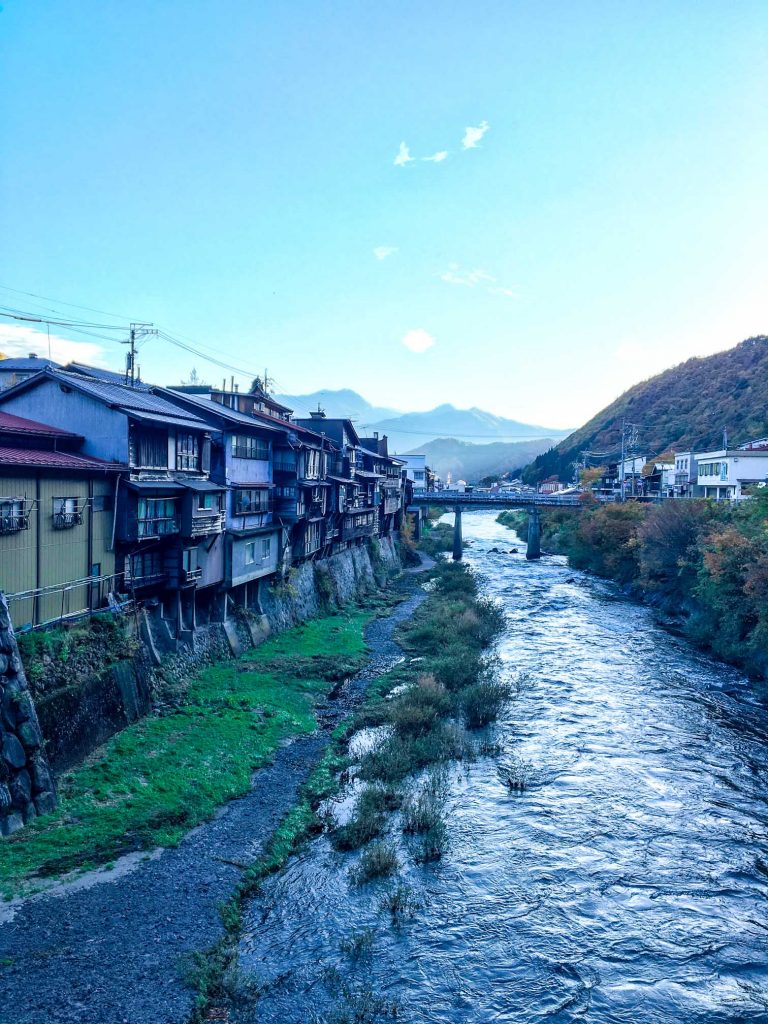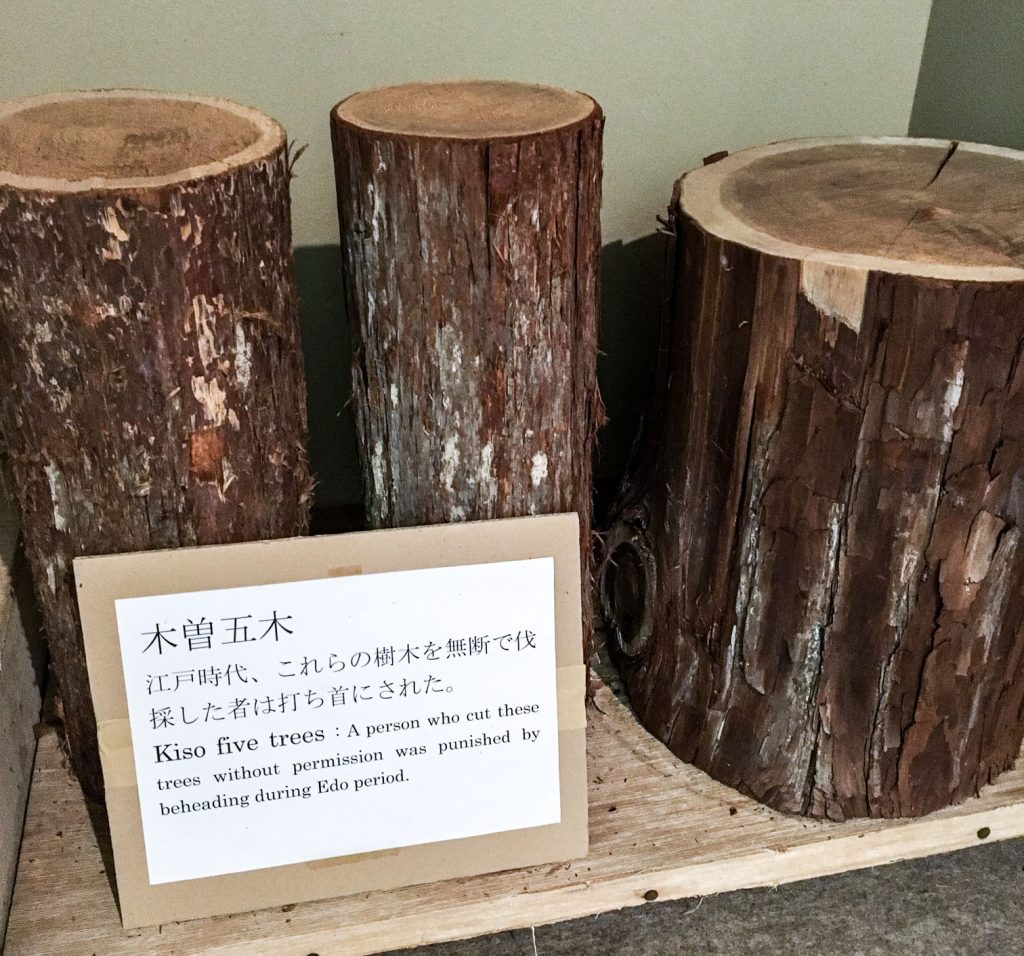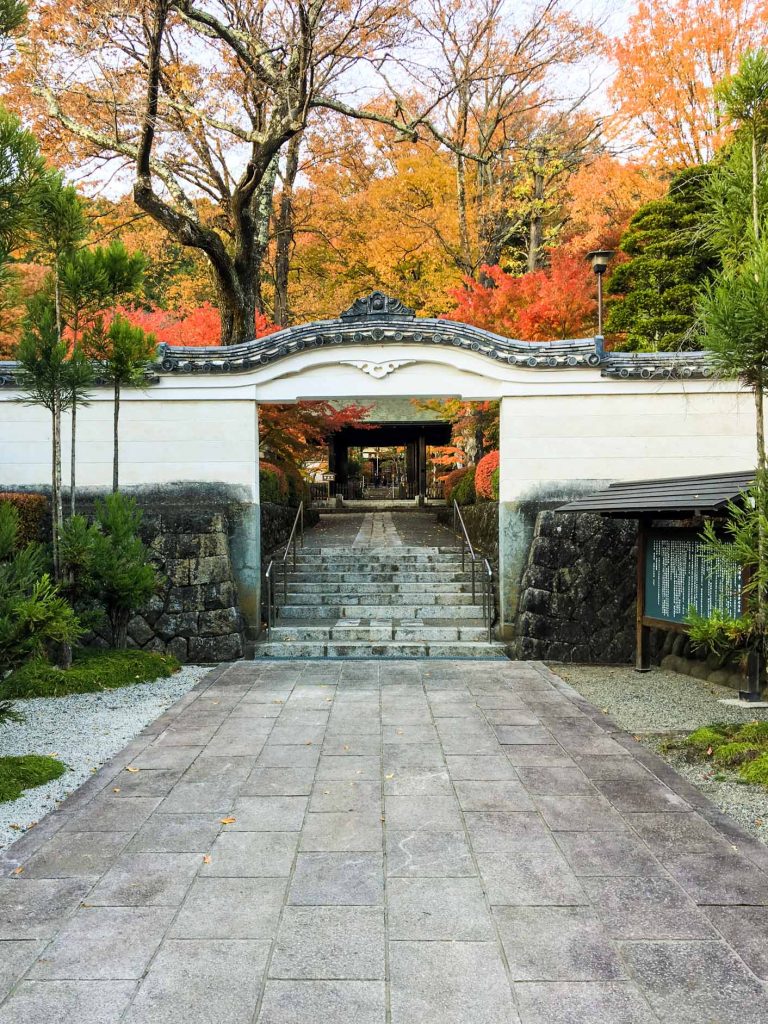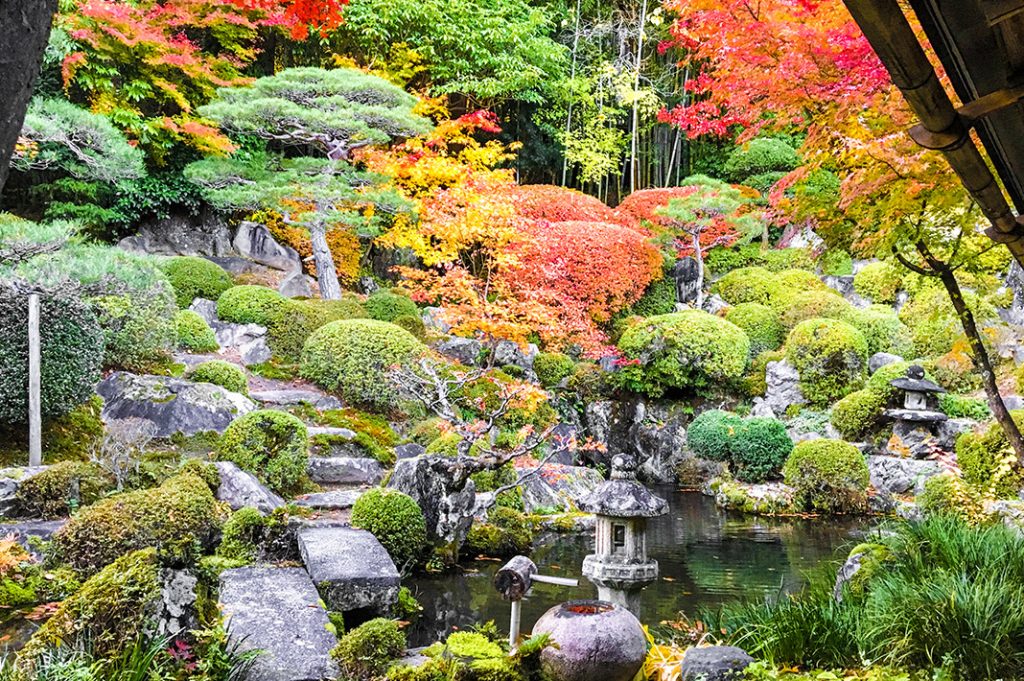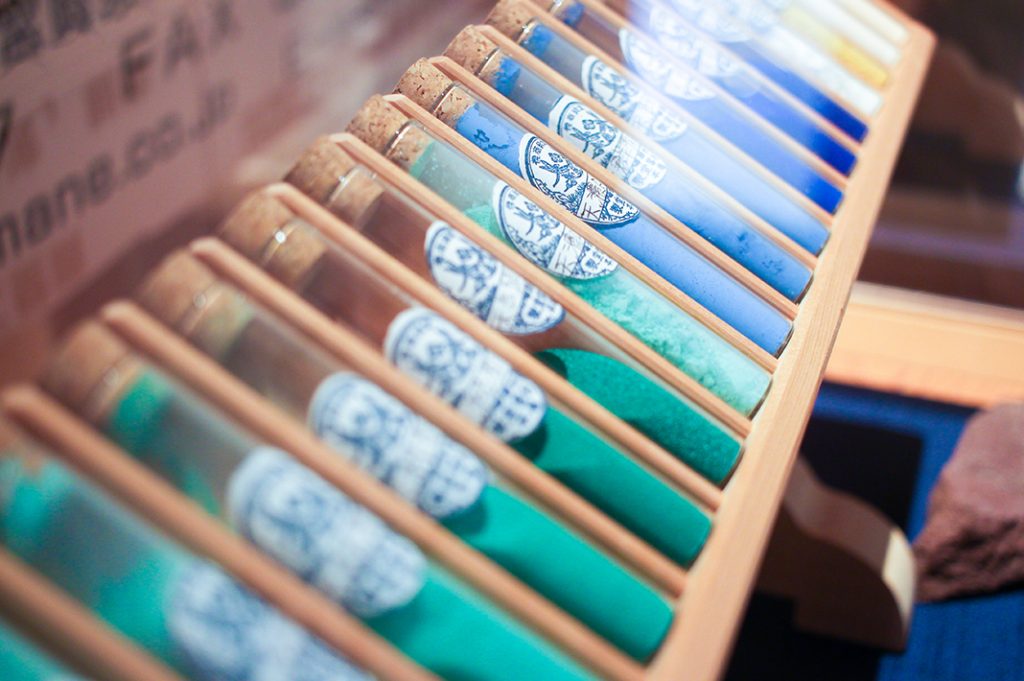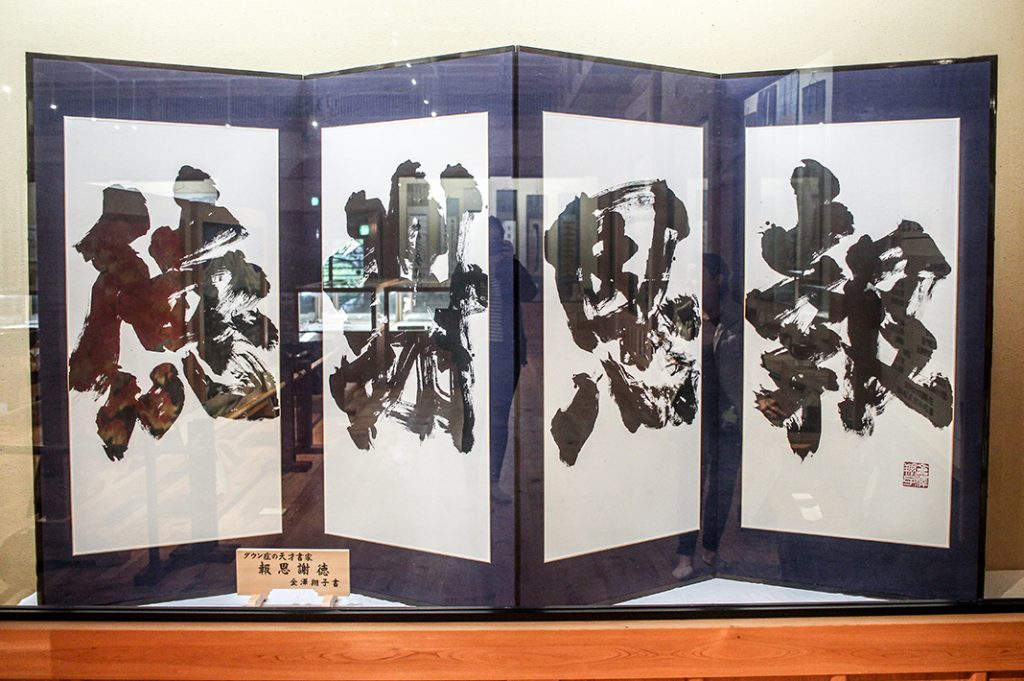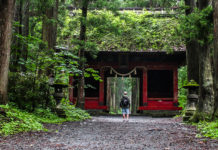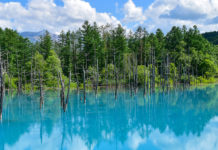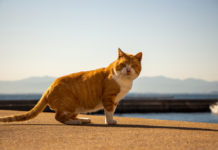If you’re planning a trip to the Kiso Valley, perhaps to walk the Nakasendo Trail, you will likely arrive in Kiso-Fukushima, the main access point to the region. This town, imbued with Nakasendo history, is not only a great base for exploring the region but a wonderful destination in itself. By extending your visit to the region a few days, you can truly soak in the Japanese country life. Here’s how I spent my day in the town of Kiso-Fukushima.
Arriving in the Kiso Valley
The train from Tokyo took three and a half hours; a great chance to get some work done or make a dent in your book. Stepping onto the platform at Kiso Fukushima Station, with the forested hillside behind me and the air crisp and cool, I was ready for adventure. I wandered across the street to the Tourist Information Centre where I was given an English local map by staff. This handy map outlined several different walking courses, ranging from one to three hours, though I pieced my own together as follows. Here is a walking map of the journey to help you out.
Exploring Kiso-Fukushima
Facing the Information Center, head right for a few shops then take the low road (left) at the fork. After five minutes, you’ll see Ebiya.
11:40am: Peruse Kiso Lacquerware (shikki) at Ebiya
The iconic Japanese art of lacquerware (shikki) dates back thousands of years, with the Kiso region famously producing it for around 600 of those. While there are many places to buy it in town, I enjoy the range, not to mention the jazz soundtrack, at Ebiya. This mother-son operation is filled with beautiful handmade and hand-painted homewares; if you’re like me, you will want to spend all your money here. With budget and practicality in mind, I decided on a travel-sized hinoki cypress shoe-horn—very handy in Japan.
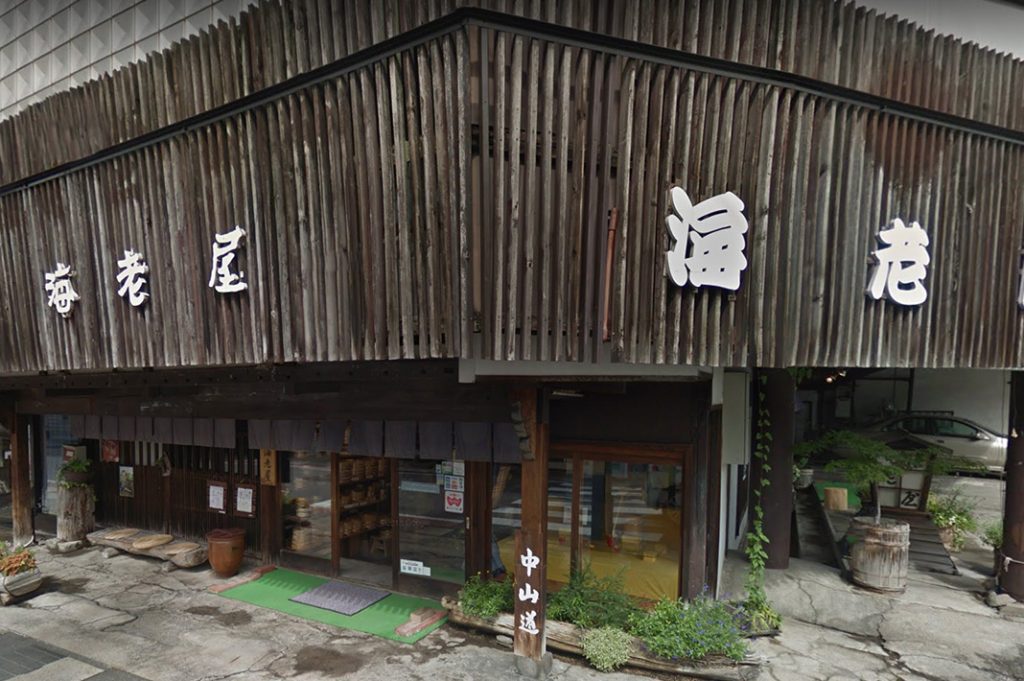
Name: Ebiya
Open: 9am–6:30pm
12:00am: Try the best soba in town
If you’re ready for lunch, you can’t go past soba while you’re in Nagano. This region grows some of Japan’s best buckwheat which is used to produce very high-quality soba noodles. Across the street from Ebiya, you’ll find the well respected Kurumaya restaurant (open from 11am).
1:00pm: Explore Uenodan
Resist temptation to cross the river just yet, continue along the main road, taking a left over the next bridge. This will bring you into the historic townscape of Uenodan. The architecture style here is of the Edo Period (1603–1868), with many of the charming old houses converted into restaurants.
If soba wasn’t your thing, there is a delicious wood-fired pizza place called Matsushimatei inside one of the old houses. It feels more like a tea-house but the food is undeniably Italian. Take your time to wander around these quaint streets and imagine yourself back in time. If it weren’t for the “we accept bitcoin” sign on one of the restaurants, I may have believed I was.
1:30pm: Relax at the Public Footbath
From Uenodan, head five minutes to the free public foot bath (ashi yu) on the banks of the Kiso River. It’s free to use, just bring a small towel to wipe your feet dry with. As your legs begin to relax, take in the surrounding views of the river and trees. Feeling brave after my footbath, I decided to walk the stone reflexology path; I can only imagine my facial expressions as the various pressure points on my feet were being jabbed. If you don’t feel like a soak yet, no worries; it’s open 24 hours so you can visit any time.
Once you’re dried off, head over the bridge beside the footbath. From the mid-point, take a moment to enjoy the Edo aesthetic of the buildings backing onto the river. Once across, head to the right and walk 5 minutes until you reach the Yamamura Daikan Yashiki Museum.
2:00pm: Yamamura Residence
A major reason that Kiso Fukushima grew so large and prosperous during the Edo Period is that it contained one of the four security checkpoints of the Nakasendo Trail. The Fukushima checkpoint was overseen by Mr Yamamura of the Owari clan, a powerful figure in the community. Today, only part of his reputedly decadent estate remains, restored for visitors to explore. Inside the rooms, you’ll find a collection of Edo period documents, ceramics, weapons and clothing.
Name: Yamamura Daikan Yashiki Museum
Open: 8AM–5:30PM (closed Thursdays)
Back on the main road, facing the entrance, head right to continue walking in the same direction you had been. Follow the signs and, after 10 minutes, you’ll arrive at Kozen-ji Temple.
2:40pm: Kozen-ji Temple
Kozen-ji is the most famous temple in the Kiso Valley and home to the largest dry rock garden in all of Asia. Modelled after the clouds and mountain peaks of the valley, it comes with the quiet solitude you would expect from a zen garden—a far cry from some of the tourist hot spots in Kyoto.
During my visit, I was the only one there and could truly be alone with my thoughts. While the rock garden is the star, the entire grounds are beautiful and feature maple trees, cherry blossoms and a striking luminous moss garden.
Also on display inside are a number of paintings and treasures but this section is closed during winter.
From here, I moved onto the Fukushima Checkpoint Museum. However, if you’re up for it, you could walk another 27 minutes to Seseragi no toki Hot Spring (open 10 am–9 pm). If you took this alternate route, you could expect to add an extra 1.5-2 hours to your journey. Though, if you have an onsen waiting at your hotel, you might as well keep following my walking tour.
Back on the main road, continue upstream, taking the third bridge. It will look like a set of steps and the end of the road. Once across the river, the next stop will be right in front of you; head up the stairs to find it.
3:30pm: Fukushima Sekisho (Checkpoint) Museum
I find the Nakasendo trail fascinating. Hundreds of years ago when the samurai ruled Japan in Tokyo (then called Edo), they maintained power by holding hostage the families of Japan’s feudal lords. The lords were required to visit their families regularly in Tokyo via ancient trails such as the Nakasendo; all the time and expense of this travel ensured nobody had the time or funds to uprise. To ensure no weapons were coming into Tokyo and no women and children were being smuggled out, four security checkpoints were constructed to monitor traffic.
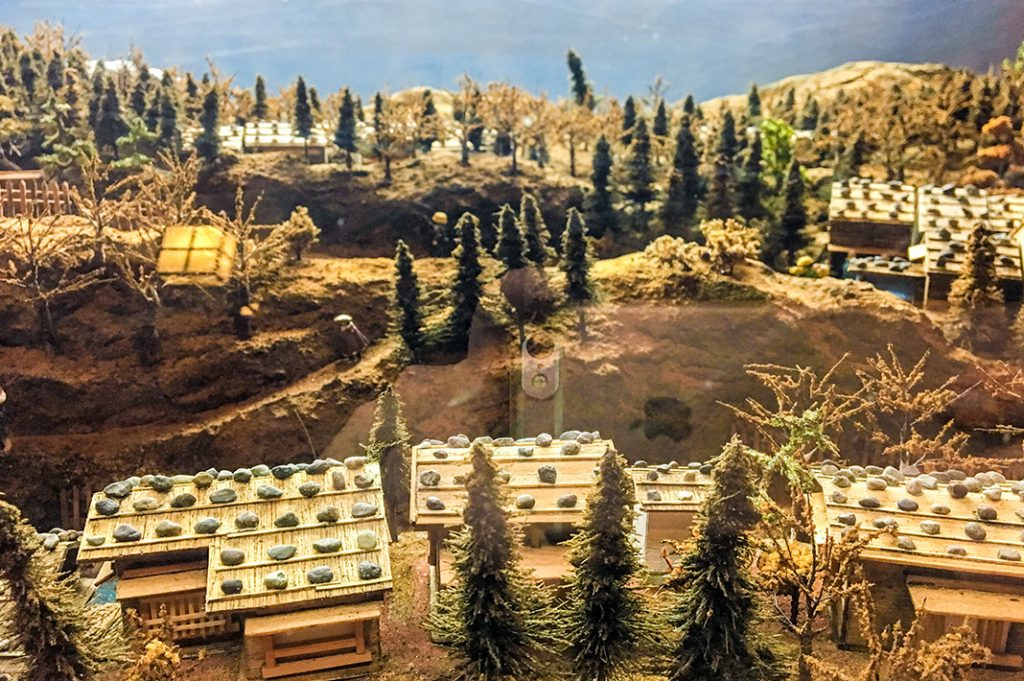
The Kiso-Fukushima checkpoint was founded 270 years ago for this very purpose and has now been restored into a neat little museum. I found the relics of the Edo Period (weapons, maps and documents) fascinating. It is a must-see attraction in Kiso, particularly for those interested in the Nakasendo trail history.
If you have more time
If you want to skip some of the activities above, there are plenty of substitutes. You could go for a tipple at either Nanawarai or Nakazen Sake Brewery, take in the views of the Gongen Waterfall or perhaps arrange a soba, chopstick or pickle making class at The Kiso Cultural Center. The Tourist Information Center can help point you in the right direction and offer plenty more suggestions. If you want to stay a few days in the area to fully experience the country charm, check out this article covering day trips in the Kiso Valley which use Kiso-Fukushima as a base.
Help in Kiso Fukushima
Travelling around the Japanese countryside can be a new and challenging experience for some. Luckily, Nagano has great Tourism Offices and services to help your stay be great. There is a free multi-lingual hotline you can call if you’re lost, want to make a reservation or need help communicating with Japanese staff. Call 0120-691-792 (toll free) or +81926875289. The service is available in English, Korean, Chinese, Bahasa Indonesian as well as Thai.
Also, Kiso Fukushima has a great Tourist Information Center right opposite the station. The staff will happily assist to ensure you have a great stay in town.
How to Get to Kiso Fukushima
Kiso Fukushima is located 3.5 hours from Tokyo by train, 2.5 hours from Kyoto and 1.5 hours from Nagoya. The main access point for the Kiso Valley is the JR Kiso Fukushima Station (木曽福島), located on the JR Chuo Main Line.
For more information on things to do in the area visit the Kiso Ontake Tourism Office website.
Post by Japan Journeys.



